U.S.-China Cooperation on the Belt and Road Initiative
and Corresponding Ideas in Chinese and Western Philosophy
April 13-14, 2017
New York City
U.S.-China Cooperation—
Bridge to A New World Economic Platform
by
Dr. Patrick Ho
Transcript
U.S.-China Cooperation—
Bridge to A New World Economic Platform
Dennis Speed: Our next speaker is a co-organizer, actually, of these affairs. He is a fierce patriot of his nation, and his American-style delivery has made him particularly, shall we say “an item” among those of us here who have gotten to know him. He is the co-author of the report, The Belt and Road Monograph 2016.
It’s my pleasure to introduce now, Dr. Patrick Ho, Deputy Chairman and Secretary General of the China Energy Fund Committee of Hong Kong, China.
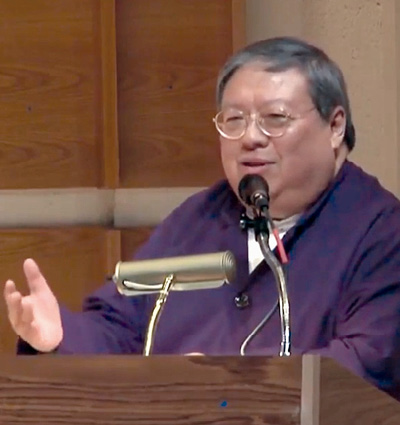
EIRNS
Dr. Patrick Ho |
Dr. Patrick Ho: Thank you, Dennis. Mme. Zepp-LaRouche, Mme. Zhang Meifang, distinguished guests, ladies and gentlemen—it’s good afternoon.
I would like to thank the Schiller Institute for inviting the China Energy Fund Committee to be a co-organizer of this event. First of all, let me introduce myself. I represent the China Energy Fund Committee. The name sounds very formidable, but it is not; we are actually a think tank that’s registered in China, Hong Kong, as a nonprofit organization. We are also registered in Arlington, Virginia as a 501(c)3 public charity.
We are dedicated to addressing issues relating to the emerging positions of China. Besides being a think tank, we’re also a “do” tank—we don’t only think, we do things. So, when we see opportunity, we research into something that we think should be implemented; we see to it that these policies or suggestions get implemented. So, we’re a little different from an ordinary think tank, we’re a think and do tank, as well.
So if you dim the light we can begin the slides. Ladies and gentlemen, sit back and enjoy the slide show: “U.S.-China Cooperation: Bridge to a New World Economic Platform.”
A World in Change—and Crisis
We live in an increasingly thriving world with hundreds of millions having been lifted out of poverty. Human ingenuity, technological advancement, and open markets have given us a world of increasing abundance. Our remarkable gains in increasing prosperity have assured us that there are in fact enough resources to go around for all of us, including our children.
|
Serious Challenges in the Globe
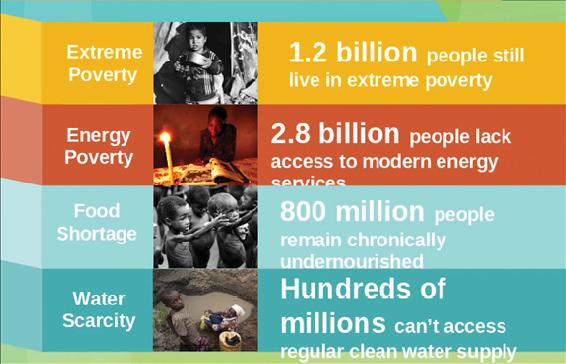 |
Looking around the world today, however, we must acknowledge serious challenges: despite the impressive economic growth of recent decades, 1.2 billion people still live in extreme poverty. As many as 2.8 billion people lack access to modern energy services, and 800 million people remain chronically undernourished. Hundreds of millions have no access to a regular clean water supply, while billions live without basic sanitation facilities.
|
Globalization 1.0: A System in Crisis
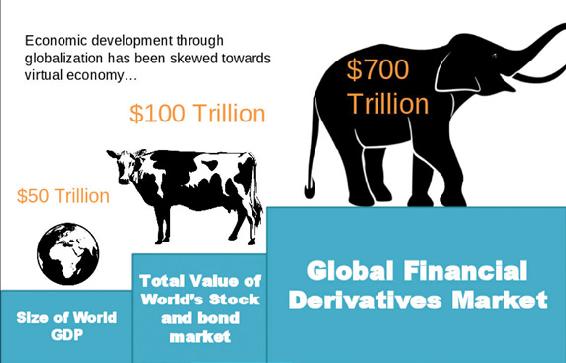 |
In 2013, the top eighty-five multi-billionaires had amassed wealth equivalent to the poorest half of the world’s population of 3.5 billion people. The top ten percent of earners have fared exceedingly well, while the bottom ten percent have continued to fall further behind. These trends repeat themselves not just globally, but also within nations and within cities. Even where there is healthy GDP growth, wealth accumulates primarily at the top. In the United States, despite a doubling of GDP over the last thirty years, income for the low-skilled workers has remained stagnant.
The pie has become bigger, but proportioned increasingly unfairly, across the globe, across generations, and within nations, resulting in real and significant consequences: Those who have been left behind, finding no recourse to address systemic unfairness in society, resort to extreme measures such as violence and terrorism to make their voices heard. Ultimately, everyone is harmed by inequality.
What are the origins of these challenges, and how can they be addressed? Such tragic results can be traced back to the broken system of economic development.
Since the last millennium, the world’s international order has been largely dictated by the disposition of natural resources. Many of the challenges we face today still stem from the zero-sum game of capturing resources for the security and interest of individual nations. Countries, in the name of national security, seek to secure strategic commodities for their development. And this concern is only heightened when growth exceeds the local supply of available natural resources.
At this point, countries have traditionally expanded their territories overseas, looking for new markets and increased access to resources. For most of human history, this involved plundering, slaves, colonies, and wars, with some countries annexing foreign territories in the name of religion, civilization, progress, and democracy. And others regularly pillage for spoil. Empire and imperialism reign.
Thing changed after the two World Wars, when imperialism and colonialism gave way to democracy and human rights. The answer that emerged was globalization. Globalization deploys capital and investment, trade and goods, people, and services and information across national barriers, based on a model of free trade. It has proven to be a very effective scheme for amassing great fortune, and it has accelerated growth in the global economy.
Free trade, however, has also come with its share of disadvantages. Most notably, it has disproportionately benefitted the capitalist class while leaving lower skilled workers struggling to make ends meet. This inequality has not only become a source of social strife and resentment, but also a real obstacle to continued economic growth. In the developed world, workers now protest against free trade, vilifying offshore workers and foreign investments.
In the developing world, a failure to share the fruits of progress has resulted in even greater hopelessness and despair. The absence of a future to look forward to, coupled with economic and political uncertainty, has given birth to violent extremism and terrorism. Today’s youth are resorting to desperate measures and joining extremist groups and organizations. In either case, the end result is conflict, discord, and instability within and among nations, all of which tragically have undercut and undermined the drivers of human progress.
For the last half-century, economic development through globalization has been skewed towards the virtual economy and service industries, including financial derivatives. This has been accompanied by astronomical national debts with ever-widening income gaps, wealth disparity, instability in the financial system itself, and all its inherent social woes.
Our world is now desperately searching for a new paradigm of development, one which will return us to a policy of balanced economic development where asset-based physical and real economy, such as investment in infrastructure development, plays a central role.
Globalization 2.0
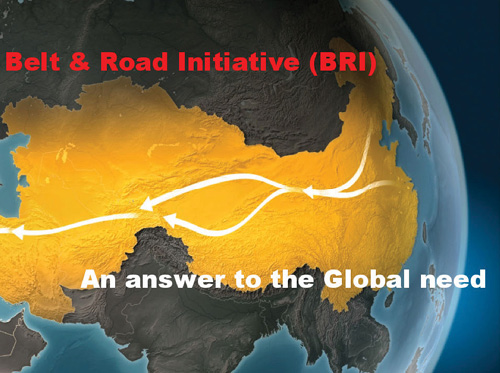 |
Today, Globalization 1.0 is a system in crisis. However, to return to isolationism and protectionism would be against the overall trend of human progress. The world is in dire need of Globalization 2.0. And China’s Belt and Road Initiative (BRI) is the answer to this need.
If we aspire to live on this planet happily and peacefully, we must shift to a more sustainable and inclusive model of development. It is not possible for one country alone, or one sector of society alone, to have a hold on all the wealth and enjoy the fruits of prosperity. This only leads to resentment from our neighbors who rightfully seek their own path to fulfillment. Inequality leads only to insecurity and instability, ultimately harming both those who have too much and those who have too little. What we need today, instead, is a strategy for development anchored in the principle of inclusiveness and sharing. By sharing growth and security, we can ensure development that is long-lasting and sustainable. And this is the underlying spirit and intention of the Belt and Road Initiative.
Ever since the reform and opening up initiated in 1978, China has pursued rapid development by embracing the open market economy. China’s accession to the World Trade Organization in 2001 ushered in a spell of rocketing development. By 2015, China’s GDP had multiplied sevenfold since 2000, and 184-fold since 1978. It is now the second largest economic aggregate in the world, after the United States.
But the economic prosperity of China has been paid for with a heavy toll on the environment and on income equality. With rising wages and escalating land premiums, coupled with renewed public concerns for social justice and equality, China has now reached a bottleneck in economic development, just like other maturing economies.
Facing these costs and challenges, China has realized that the current approach to economic growth, with its emphasis on profits and returns, is unsustainable. The country understands that only a new mode of growth and development will be able to address fundamental issues, such as inequality, lack of natural resources, and excess manufacturing capacities, in one go. And history is full of stories of nations that have opted for colonization or war as answers to foundering economic growth.
|
BRI—New Paradigm of Development
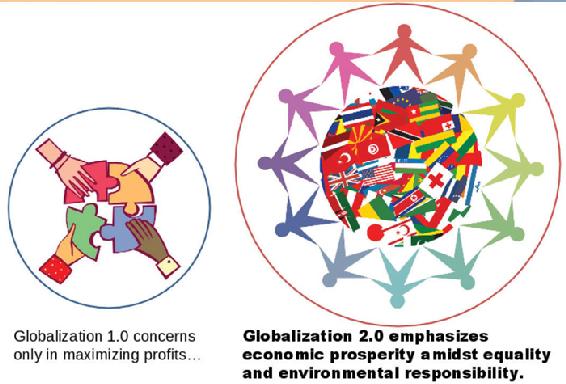
Globalization 1.0 is only concerned with maximizing profits... |
China will do neither. It has chosen a third pathway, a road of peaceful co-development, driven by a strategy of sharing with its neighbors, and anchored around the economic principle of “win-win” cooperation.
|
BRI—A New Model of Connectivity
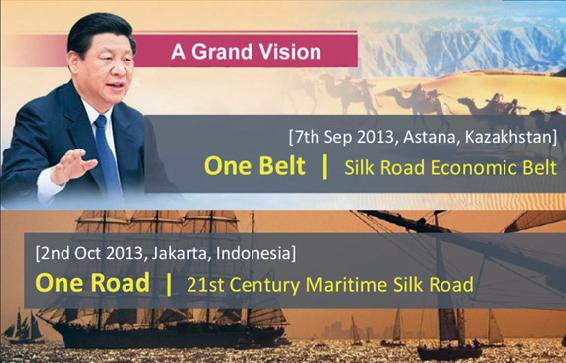 |
So, in 2013, Chinese President Xi Jinping put forward his strategic concept of building the One Belt, One Road initiative, now called the Belt and Road Initiative, or BRI. This involves constructing economic and cultural corridors along the ancient Silk Road and the maritime Silk Road. It is a grand vision of peace, development, cooperation, and a “win-win” outcome.
BRI Is a Grand Vision
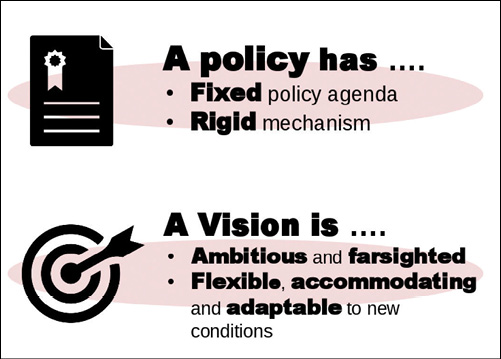 |
This vision aims to create the most promising economic corridor in the world, directly benefitting a population of 4.7 billion people—of sixty-five countries, or sixty-seven percent of the global population—mostly from the developing economies. With a collective GDP of $27 trillion, this grouping accounts for about thirty-eight percent of the world’s production. Indeed, it is a grand vision for international cooperation.
The characteristics of the Belt and Road Initiative are:
• Goodwill,
• Sharing,
• Inclusiveness, and
• A People-to-People approach.
The first, Goodwill: The Belt and Road Initiative is all about connecting countries and peoples, accommodating differences, embracing diversity, realizing potential, and enabling various goals and prospects, fostering goodwill.
Sharing: Under the Belt and Road Initiative, if China has excess capacity and a surplus of funds, it will be shared. By helping neighbors to grow and making them into friends that are just as developed as itself, China recognizes that it, too, will in turn become more stable, more secure, and more prosperous.
Inclusiveness: The Belt and Road Initiative is open to all countries and all people interested in being connected for mutual development, regardless of form of government, cultural and religious background, or geographic location. It is guided by the desire to build communities and bring people in, to see others prosper as a seed, just as China has in recent decades.
People-to-People: This model, which promotes common experience, will ultimately lead to relationships that are meaningful and long-lasting, based on a sense of community rather than competition. In so doing, the Belt and Road Initiative addresses not only economic challenges but also cultural and social ones, promoting values of sharing and solidarity with all people. The Belt and Road Initiative provides the foundations for peace.
This initiative aims to promote the connectivity of the Eurasian continent and adjacent areas. It is expected that in the coming years, new roads and new railways will be built, new sea lanes and new flight paths opened, and oil pipelines and electric grids connected. It is a new model of connectivity among peoples.
However, connectivity is not merely building roads and bridges or making linear connections between different places on the surface. More important, it should be a three-dimensional combination of infrastructure, institutions, and people-to-people exchanges, and also a five-way multifaceted progress in policy communication, infrastructure connectivity, trade links, capital flows, and understanding among peoples. Simply put, the Belt and Road Initiative regards infrastructure development as providing the basic building blocks of global connectivity and social economic growth.
The Belt and Road Initiative represents a new model of sustainable development for the world, Globalization 2.0, where social inclusiveness, equality, and individual and social well-being are featured alongside economic growth and prosperity, with equal weight given to every one of them.
Prosperity is achieved through collective, inclusive approaches, built on trust, social justice, goodwill, dialogue, and collaboration among countries.
Whereas Globalization 1.0 concerns itself only in maximizing profits, Globalization 2.0 emphasizes economic prosperity amidst equality and environmental responsibility.
Infrastructure
Infrastructure as a Key To Solve Today’s Challenges
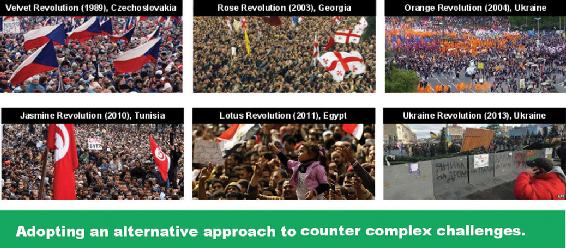 |
In its formative stages, the Belt and Road Initiative will rely on making investments in infrastructure building, putting a call out to the entire world to start steering the global economy back to basic real assets and gradually away from virtual derivatives and deficit spending. Investing in infrastructure is a proven way to invest in our future, providing a foundation and an impetus for growth and development.
The term “infrastructure,” however, encompasses physical structures as well as institutions and human capabilities. Economic infrastructure includes: transportation, energy, communications, and financial services systems. Social and environmental infrastructure, however, includes water and sanitation, schools, hospitals, and healthcare systems.
Infrastructure-based economic development requires that a substantial proportion of the nation’s resources must be systemically directed to its long-term assets, such as transportation and energy, as well as social infrastructure such as schools, universities and hospitals. This defines the long-term economic efficiency of stimulating growth in economically lacking regions and fostering technological innovation and social equity, while providing free education and affordable healthcare for all.
Infrastructure is an economic driver and forms the backbone of economy in every country and the necessary input to every economic output. It is critical to a nation’s prosperity, public health, welfare, and human resources. The condition of infrastructure has a cascading impact on the nation’s economy, business productivity, GDP, employment, personal income, and international competitiveness.
Infrastructure does not favor big enterprises only, but also helps medium, small, and even individual enterprises to thrive and prosper, providing them with access to technology and pathways into markets. Such social empowerment creates opportunities, especially for individuals to lift themselves out of joblessness and poverty.
The United Nations’ “2030 Agenda for Sustainable Development” notes that infrastructure investments in transport, irrigation, energy, information, and communication technologies are crucial to achieving sustainable development and empowering communities in many countries. It has long been recognized that growth in productivity and incomes, and improvements in health and education outcomes require investments in infrastructure.
However, there are multiple challenges in building sustainable infrastructure. First and foremost, the global infrastructure gap is a significant challenge:
• 2.6 billion people face difficulty in accessing electricity full time,
• 2.5 billion people lack access to basic sanitation,
• 800 million people lack access to water, many hundreds of millions of them in sub-Saharan Africa and South Asia,
• 1-1.5 billion people do not have access to reliable phone services.
The “Addis Ababa Action Agenda” addressed the need to bridge the infrastructure gap in developing countries, requiring an expenditure of $1-$1.5 trillion annually.
Even in many developed western nations, much of the basic infrastructure is out of date, at least a half-century old, and needs renovation, especially that in the United States. Infrastructure projects lack sufficient investment by the public and private sectors. And most big infrastructure projects run twenty months late and eighty percent over budget.
The Belt and Road Initiative is a grand vision. Unlike other regional cooperation projects, which are for a fixed policy agenda and a set mechanism similar to the Marshall Plan, the Belt and Road Initiative is a grand vision, providing infinite room for creative solutions and possibilities in implementation. The Belt and Road is ambitious and farsighted, but at the same time, also flexible, accommodating, and adaptable to new conditions and challenges. It provides an overarching theme and umbrella under which any form of cooperation can be made possible. Governments, businesses, think tanks, and populations can contribute continuously to this initiative, as well as to new interpretations and new content, enriching its material so as to further cooperation and shared benefits.
Globalization 2.0
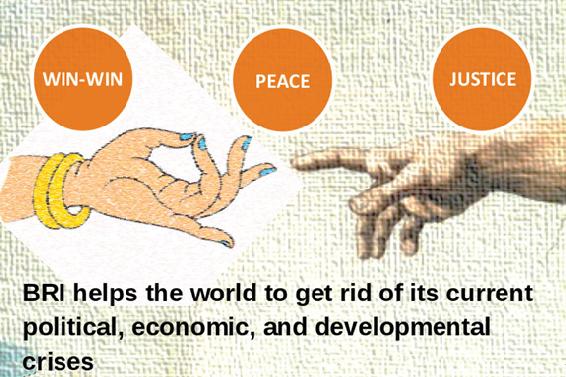 |
We all have different pasts, but we also have a common future to face. The Belt and Road Initiative is a visionary strategy for sustainable growth and development that is inclusive of all mankind. This is not only for China, but a model for all countries and all peoples. Motivated by goodwill, China is inviting people and countries along the Belt and Road to build a community of shared interest and common destiny, a community where no one is left behind, and no one has to take second place.
Simply put: The Belt and Road Initiative is neither about seeking a sphere of influence, nor striving for hegemony. It is about connecting countries and peoples, accommodating differences, embracing diversities, realizing potentials, sharing capacities, and enabling various goals and prospects.
It is a positive endeavor to seek new models of international cooperation and global governance, and will inject new positive energy into world peace and development. It paves the way for building a community of common destiny for all mankind.
Promise of the BRI for the U.S.A.
When the Belt and Road Initiative was launched in 2013, we knocked on American doors, which did not open. . . . And today, we are banging on Mr. Trump’s door, and chanting “Open, Sesame!” Ladies and gentlemen, I think after today’s discussion, I must say our “Open, Sesame!” is a big yell to the new American administration to reconsider the Belt and Road Initiative as an impetus to rethink and realign U.S. foreign policy for a new century.
I can summarize the salient points and outline the areas for the new administration’s consideration as follows. These are only suggestions as ways for the U.S.A. to hop onto the bandwagon of the Belt and Road Initiative.
1. Consider using the Belt and Road Initiative as a platform to spearhead social and economic initiatives and programs conducive to a closer cooperation between countries and regions.
2. Realign trade agreements with Pacific countries and Atlantic countries, too, to accommodate the Belt and Road Initiative.
3. Urge national and regional development banks and kindred institutions to assist in financial agreements or arrangements to support infrastructure developments of the Belt and Road Initiative, especially from the private sector.
4. Cultivate an enabling environment for private and institutional funds to participate in mending the infrastructure investment gap.
5. Produce leadership in ensuring security on land and at sea for Belt and Road Initiative infrastructure and related projects.
6. Participate in the rebuilding of peace, stability, and hope in the war-torn and troubled regions of the world, through social-economic incentives derived from the BRI and projects related to the process of reconstruction of the countries that had been bombed and brought into war.
From Point 6, we see that the real merits of the Belt and Road Initiative lie in its geopolitical benefits, not just for China or those involved with this initiative, but for all countries in the world, by bringing stability, hope, and peace to our much-troubled world.
Our world is experiencing profound and complex challenges, including the rise of radicalization and violent extremism, against the backdrop of cultural and religious tensions. Countering these challenges has necessitated a wide range of approaches to promoting tolerance and reconciliation, not to mention the resources and efforts that have been devoted to combating terrorism in the last decades—but all with discouraging, if not dismal results.
Perhaps we have been addressing only the symptoms without attending to the roots of the problem, and it is high time that we take a look and reconsider adopting an alternative approach.
The political problems in the Middle East and North Africa cannot be solved by military might alone. Only by changing the underlying socio-economic conditions in those regions can we provide hope and a future for the great masses of young people who today are living in despair, and resorting to desperate measures by joining these extreme formations.
The Belt and Road Initiative’s many infrastructure projects would bring a massive amount of jobs, generating economic activities and addressing the employment concerns of the increasing youth population in those areas, while bringing peace, hope, and long-lost stability to the troubled regions of Middle East and North Africa, integrating them with the global economy, and helping to mitigate the social ills spawned by periodic bombings, incessant wars, and the rapidly growing wealth gap from Globalization 1.0.
The Belt and Road Initiative operates according to the geo-economic principles of “win-win cooperation” and overcomes the zero-sum game of geopolitical confrontation that threatens to bring the world close to war. The Belt and Road brings peace and justice by reducing inequalities. It has the potential to help the world to get rid of its current political, economic, and development crises.
Ladies and gentlemen:
The two previous Silk Roads traded tea, silk, spices, exotic fruit, jewelry, and gold. This 21st Century Silk Road offers an exchange of creative ideas, views and perspectives, traditions and legacies—it exchanges kindness, it offers peace!
The modern Silk Road teaches us to learn mutual respect, and to recognize that despite our different backgrounds, there are fundamental values we all hold dear, basic principles we all respect, and core understandings we all embrace. By reaching out and bringing in, we can create world peace, friendship, and prosperity.
Ultimately the Belt and Road Initiative is about building roads and bridges throughout the entire world, connecting peoples and communities, linking faiths and cultures, joining lifestyles and vocations, and communicating aspirations and imaginations in one glorious celebration of diversity of values and accommodation with harmony.
|
Creation of World Peace, Friendship and Prosperity
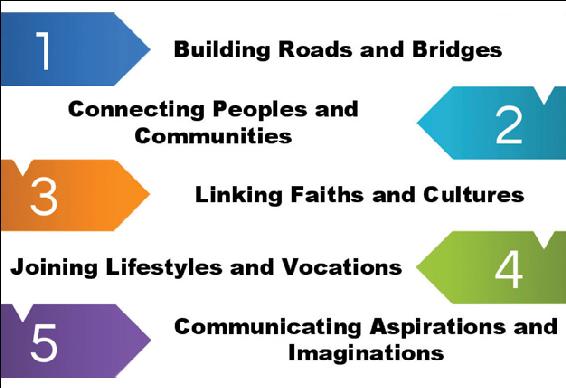 |
Ladies and gentlemen:
The Belt and Road Initiative is a global challenge calling for global participation. Through this initiative, China is sending out a most sincere message, loud and clear, of collaboration and partnership, to all our friends and foes from near and far, to work together to find solutions to sustainable growth for all of humanity. By sharing, we become better partners in the balancing of our prospective goals, achieving our common dreams.
A very famous Chinese, Sun Yat-sen, once had a dream. He said: “Once our goal of modernizing China is accomplished, the dawn of a new century will shine upon our beautiful country, and the whole of humanity will enjoy a more brilliant future.”
And a not so famous Chinese, Patrick Ho, had a dream, too. And he said, “I have a dream. I dream of a cultural China, with ideas and values to inspire humanity. The redefinition of Chinese core values signifies the awakening of a modern humanity, and would eventually lead to another human Renaissance of our modern time.”
The Belt and Road Initiative is a world bridge connecting all dreams. This dream is not only the dream of 1.3 billion Chinese, over 5,000 years. . . . It is also a world dream, the dream of peace on Earth and the world as one. The dreams belong to all of us. It belongs to you, and to me.
I thank you.
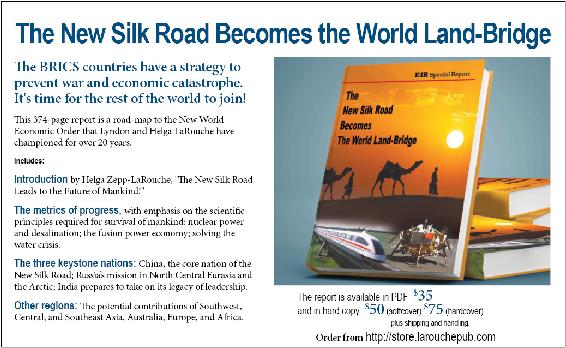 Visit WorldLandBridge.com |
